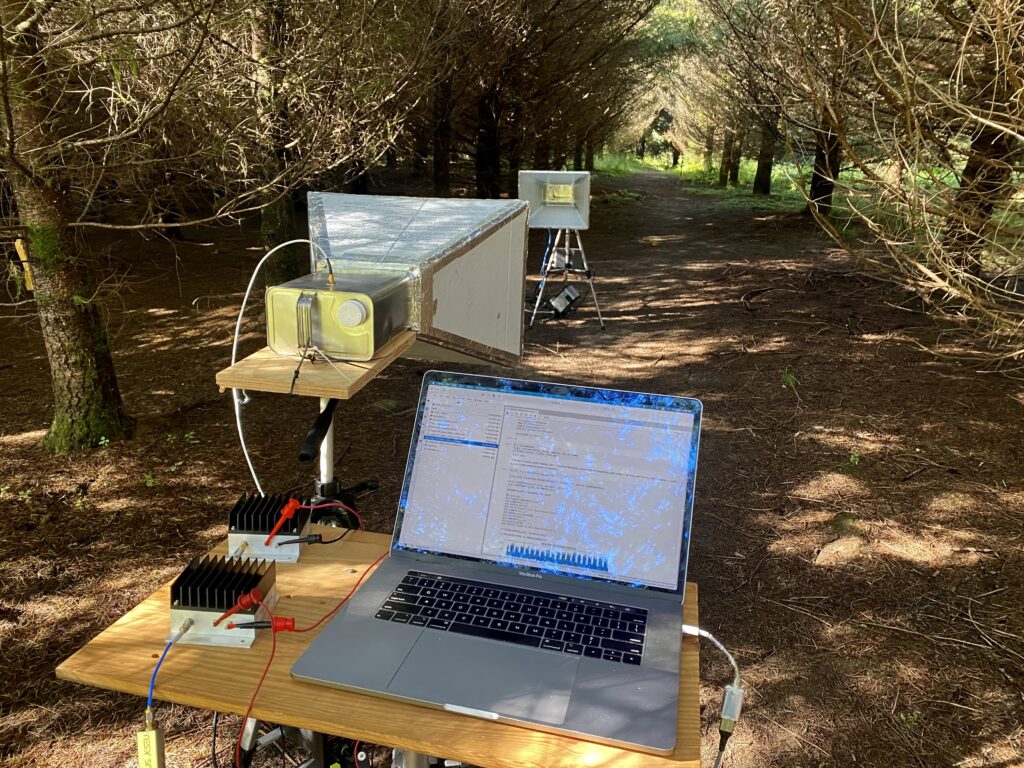Transmitting radio waves without power
Researchers have discovered a way to transmit information wirelessly without power, simply by opening an closing a switch that connects a resistor to an antenna. This effect does not violate any physics - it works because the random thermal noise signature of the transmitter changes when the resistor is connected or disconnected.
The researchers used an RTL-SDR with high gain horn antenna and low noise amplifiers to measure changes in the thermal noise signature of the transmitter.
They also compare their idea to backscatter devices, which are another form of passive RF communications that make use of ambient radio signals such as from TV transmitters. They note that their thermal noise approach has a lower data rate and range compared to backscatter, but their next goal is to try and improve this.

Re inventing the wheel here. Passive repeaters are olde skewl. Attach two antennas together with a transmission line. Two way pipe. Energy balance equation shows energy conversion across the network nodes.
Energy transfer equals thermal energy conversion equals thermal noise. Why is this news?
And wasn’t there a bloke back in the OG day of rf theory that proved this with a kite and a galvanometer?
NO, REALLY why do all these snot noses think they’ve discovered El Camino Real every time they’re left alone with a hand full of shiney tech hand me downs ?
Why is this news?
Stop it already!
Mahlon Loomis accomplished this achievement over 150 years ago on two Virginia hilltops with nothing more than copper wire, kites, and a galvanometer. Check out his bio on wiki for more info.
This is cool, but also seems kind of inefficient? Modulating the signal requires either manually (or more likely, with a relay) switching the resistor. That is going to require *some* power.
What is old is new again. People have been playing with modulated retro-reflectors for many decades. I have a book published in 1981 that shows how this works. And I’m sure he wasn’t the first to have had this idea
RFID devices use a technique similar to a modulating retroreflector. They absorb RF from the “receiver” (which also contains a transmitter sending power continuously) and “transmit” by switching a resistive load in and out across their antenna. That changes the amount of RF current they absorb, and the receiver detects those changes in current.
It’s a little unclear from this article, but my impression is they’ve developed a different method. The receiver is sensing the thermal noise in a passive circuit without transmitting any RF to it, so it’s not a retroreflector. But depending on their test setup it’s possible they’ve mistaken a backscatter effect (RF from an outside source, like a broadcast station) or switching transients from the transistor that switches the resistor for changes in thermal noise.
Dave H touches on it and I agree…
The researchers have to create a much more controlled RF environment for this to be convincing.
The laptop in the setup is indeed a broad band RF noise generator all on it’s own.
It’s position is almost perfectly positioned to interfere with the setup of this experiment.
I suppose the proof of concept is to repeat the findings in a much more quite RF environment.
Heck, a cardboard box lined in tin foil would do.